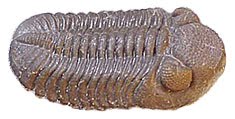Adventures on Earth for the July 27, 2011, edition of The Review
The Allegheny Plateau rises above the Ridge and Valley geological province to its east and south. It is the land that was only gently folded during the collision of what is now North America with Gondwanaland (Africa and South America) during the Allegheny Orogeny approximately 300 million years ago.
In the Ridge and Valley province, rock layers were sharply folded and stacked one against another.
This zone of compression ended at the Allegheny Front, which forms the eastern and southern boundary of the plateau.
Behind the front, in the gently sloping terrain, ridges of resistant rock rise above the floor of the plateau. Here and there, knobs rise above the ridgeline.
One such knob is the highest point in Pennsylvania. Mount Davis rises to 3,213 feet above sea level. It is on the ridge of Negro Mountain, which rises in Maryland and runs well into Pennsylvania.
Negro Mountain was named for a legendary African American who is supposed to have died valiantly fighting Native Americans when he and the party of white settlers was attacked.
Mount Davis is named for John Nelson Davis, a resident of the area, Civil War veteran, surveyor, and naturalist.
Mount Davis is not as spectacular as some high peaks in the United States. It stands not much above the ridgeline.
And the view from the observation tower, a rickety old steel fire observation tower converted to tourist use, is not spectacular.
To the east, Allegheny Mountain stands out and to the west, Laurel Mountain stands out. Between Negro Mountain and these two mountains are a few hills and a lot of the plateau.
To the south the view stretches into Maryland and West Virginia. To the north the view takes in the Allegheny Front and plateau.
Mount Davis is included in Forbes State Forest and is set aside as a nature preserve. Its high elevation means flora and some fauna would be unique to high elevation regions.
The rock that creates Negro Mountain is a hard, resistant sandstone of the Pottsville Group. The Pottsville group includes coal measures as well as layers of sandstone.
On the plateau the sandstone is found as cap rock, or the surface rock of a ridge.
Being harder and more resistant to erosion, it stands higher than the softer rock that is more easily eroded around it.
Faults, or cracks in the rock, allowed for erosion to the east and west.
You won’t find huge crowds on Mount Davis. It is not easy to reach because of the welter of roads in the area, but you can drive nearly to the top. From a parking lot, a gated road leads a short distance up toward the summit, then circles around it. The observation tower stands just off this road.
Just below the summit a display of plaques set into sandstone rocks offers a glimpse into much of the human and natural history of the area.
There is a large picnic area along the highway that crosses Negro Mountain and there are hiking trails through the area.
More information about Forbes State Forest can be found at http://www.dcnr.state.pa.us/forestry/stateforests/forbes/index.htm.
A map of hiking trails at Mount Davis can be found at http://www.dcnr.state.pa.us/ucmprd1/groups/public/documents/document/dcnr_002573.pdf

No comments:
Post a Comment